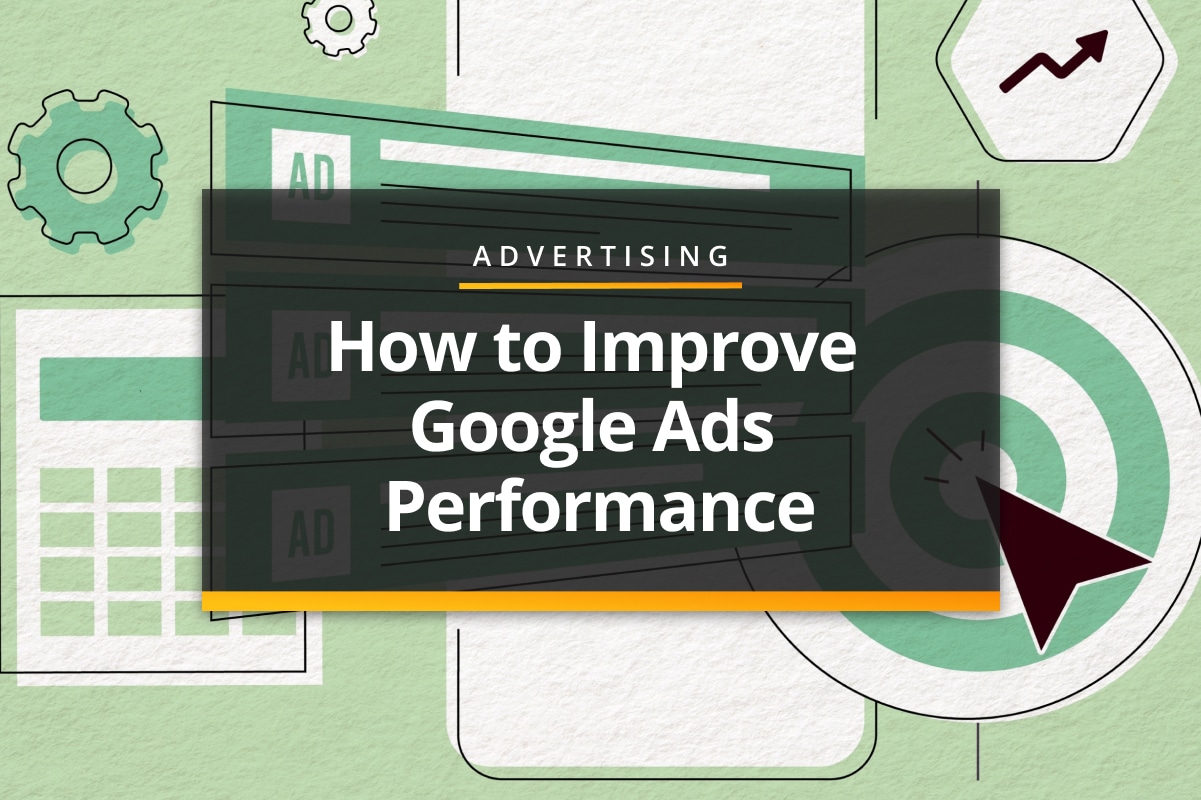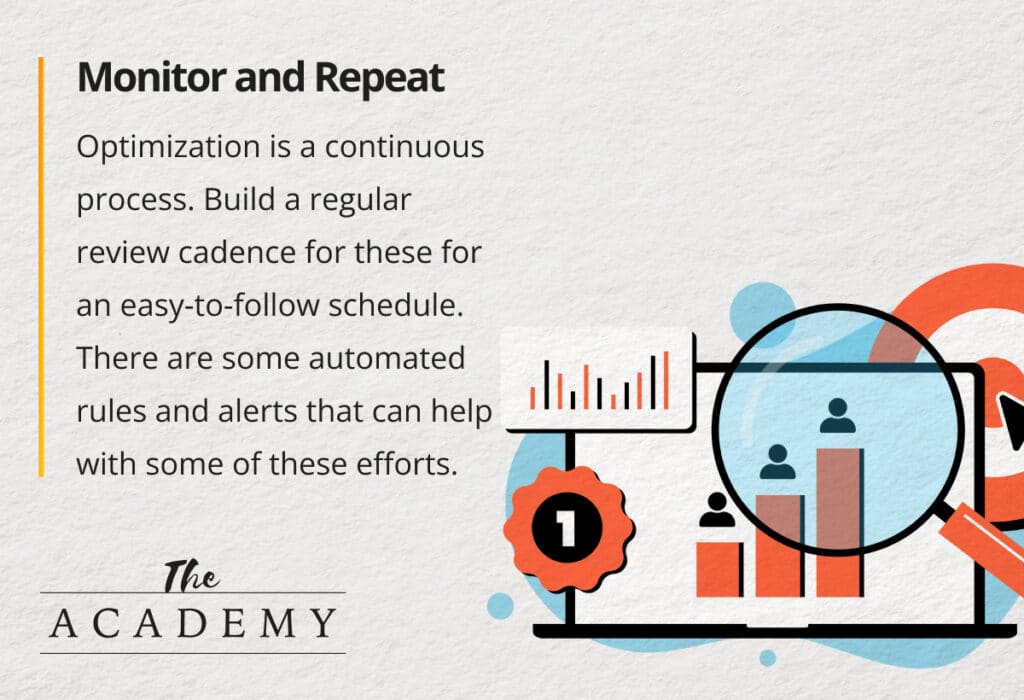
When running Google Ads, you may run into complications such as rising cost per click, more competition, and limited budgets. Luckily, improving account performance doesn’t always have to mean increasing your budget. Let’s look at other factors that could be optimized instead!
Start With the Basics: Fix Tracking and Goals

Before optimizing, it’s critical to make sure that Google Ads is tracking properly and measuring the right things. Before we go updating other factors in the account, we need to feel confident in the data that is coming through.
- Confirm conversion tracking accuracy.
- Remove outdated or duplicate conversion actions.
- Set primary vs. secondary conversions correctly. Secondary conversions can still be tracked and viewed in the account, but will not be used in automated campaign optimization.
- Align goals with actual business outcomes.
Improve Account Structure for Better Efficiency
Simplify and strengthen the foundation of your account. Account structure can play a major role in how the campaigns perform. The budget is split up depending on this structure and should be reviewed for maximum efficiency.
- Consolidate underperforming ad groups or campaigns. Review for any that are underperforming and should be paused if they are not a high priority.
- Ensure campaigns are aligned with intents (brand, non-brand, competitor, PMax, etc.).
- Eliminate overlap that forces campaigns to compete with each other.
Fewer, stronger campaigns often improve performance for the same spend.
Optimize Targeting & Keywords to Reduce Waste

Focus your budget where it matters most. Less wasted spend will make room for more high-quality traffic.
- Use search term reports to add negatives. Keep up with this often to keep irrelevant searches at bay.
- Pause low-intent broad keywords.
- Shift spend toward proven performers (high Quality Score, strong intent).
- Tighten geographic targeting (exclude irrelevant states/surrounding areas). Run a location report and see if some areas are underperforming and exclude those.
- Adjust device, demographic, and audience exclusions.
Review Ad Copy and Landing Pages
Improving the relevance of ads and landing pages can help increase quality score, which can, in turn, result in lower CPCs.
- Refresh any responsive search ads that have “Poor” or “Average” ad scores or a low CTR.
- Use pinning in your ads only if necessary.
- Test some ad copy variations.
- Improve landing page speed if necessary. This is especially important for mobile.
- Clarify calls to action and simplify forms if possible.
- Ensure message consistency from ad to page.
Adjust Bidding Strategies for Efficiency
Automated bidding strategies have come a long way and can be beneficial for your campaigns. This may require testing different strategies to find the best fit for each campaign.
- Ensure the bidding strategy fits your end goal. For example, if e-commerce is your focus, maybe try Maximize Conversion Value or Target ROAS.
- Avoid over-constraining bid strategies (too strict CPA/ROAS targets).
- Evaluate bid strategy performance regularly. Keep in mind that you should not be switching these too often, as they need time to work properly.
Use Audience Signals to Improve Quality of Traffic
Audience improvements can dramatically boost conversion rates. It’s all about further tightening your exposure to users more apt to be a right fit. The goal is more qualified clicks for the same budget.
- Add customer match lists.
- Layer in-market and custom audiences into search.
- Use remarketing lists to bid more efficiently.
- Add audience exclusions (job seekers, competitors, existing customers when irrelevant).
Schedule Ads to Show Only When They Perform Best
This is a proven way to reduce wasted impressions and clicks. You can view how ads perform by day and by hour. Performance may differ depending on the campaign or campaign type. Review the report to make important decisions on when to schedule your ads.
- Analyze hourly and day-of-week performance.
- Lower bids during low-converting hours.
- Increase visibility during peak conversion windows.
Monitor and Repeat

These optimization efforts should be reviewed frequently. Optimization is a continuous process. Build a regular review cadence for these for an easy-to-follow schedule. There are some automated rules and alerts that can help with some of these efforts. I’d recommend documenting changes you make so you can track what works and what does not.
Performance gains often come from smarter structure, cleaner targeting, and better creative—not just bigger budgets. Curious where your Google Ads could be doing better? Let us take a look. We’ll review your account and share clear, actionable ways to boost results.
Most Popular Articles

Seeing Favicons in Your Google Search Results? Here’s Why…
Have you noticed anything different in your Google Search results lately? Google added tiny favicon icons to its organic search results in January. It was…

Business Growth and Digital Marketing News & Tips 11-17-24
Are you encouraging and rewarding innovation? Lee Cockerell is the former Executive Vice President of Operations at Walt Disney World. A lover of traditional red…

Business Growth and Digital Marketing News & Tips 11-27-24
A culture of gratitude "Feeling gratitude and not expressing it is like wrapping a present and not giving it." – William Arthur Ward Beyond being…








